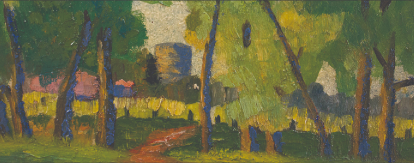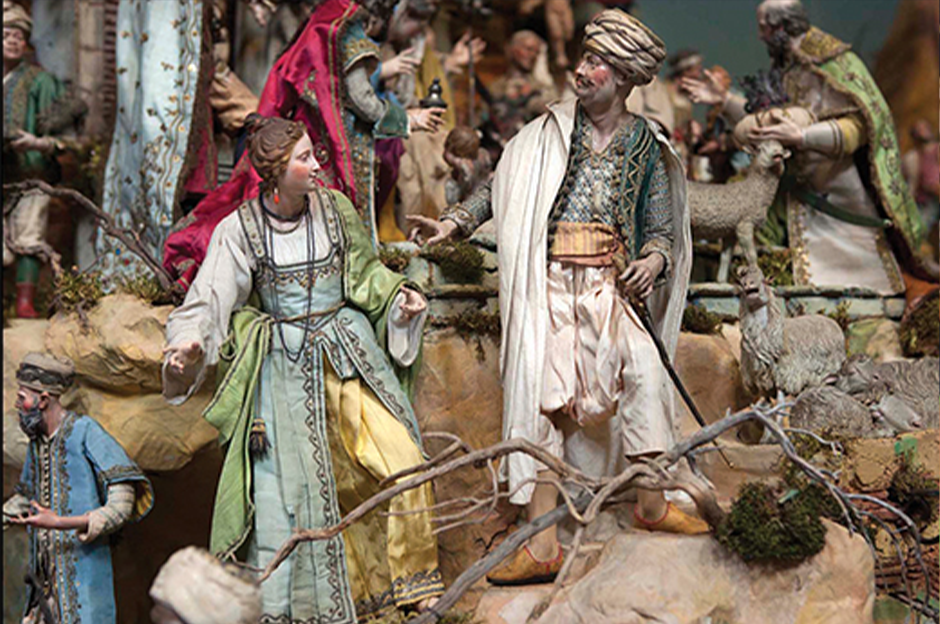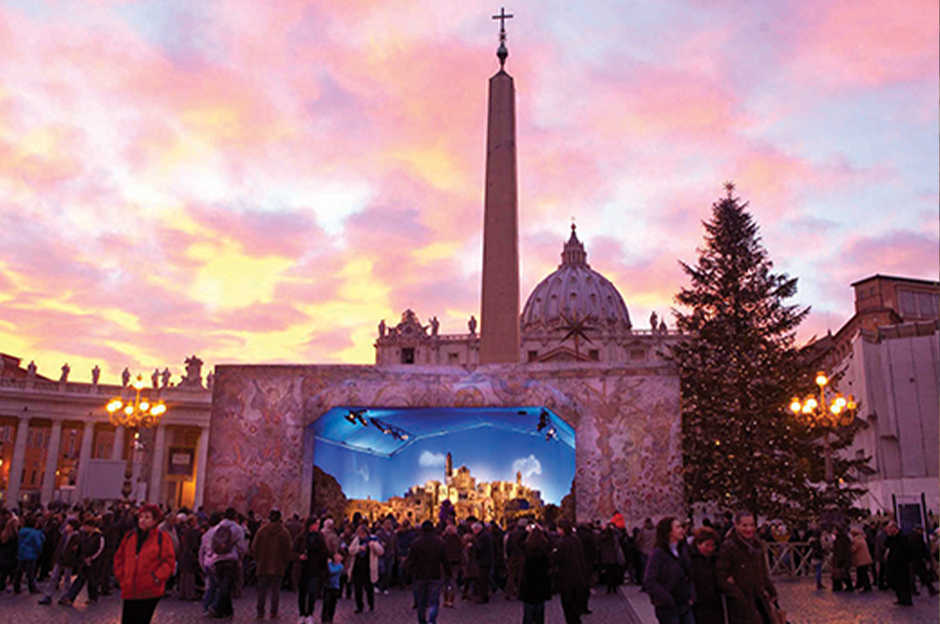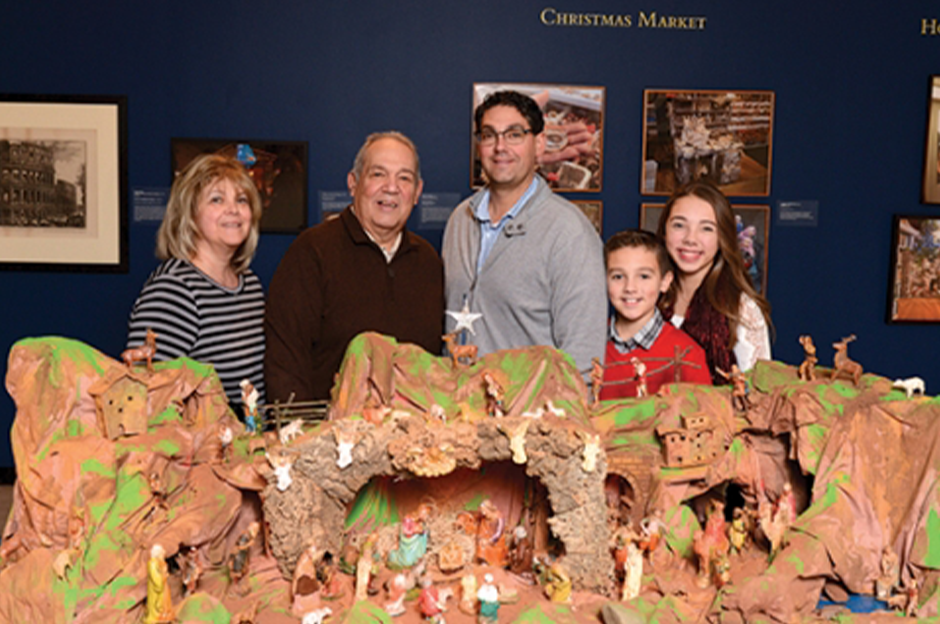Co-Sponsored by NBT Bank and Charles A. Gaetano Construction Corp
The exhibition originated at the Iris and B. Gerald Cantor Art Gallery, College of the Holy Cross, Worcester, Mass., where it was generously supported by: the Dean’s Office; the Committee on Scholarship at the College of the Holy Cross; The McFarland Center for Religion, Ethics and Culture; and the Iris and B. Gerald Cantor Art Gallery.
Photographs by Margot Balboni
An intriguing union of art, religion, and cultural history is presented in The Italian Presepe: Cultural Landscapes of the Soul, opening Saturday, October 10 in the Museum of Art. More than 50 images by photographer Margot Balboni combine with some rare 18th-century figures and other contextual objects to document an important form of Italian installation art—the Nativity scene, or presepe.
The Italian Presepe: Cultural Landscapes of the Soul originated in 2014 as an exhibition co-curated by Sarah Stanbury and Margot Balboni at the Iris and B. Gerald Cantor Art Gallery at the College of the Holy Cross, Worcester, Massachusetts.
The rich history of presepe dates to 1223 when St. Francis of Assisi staged a reenactment of the Christian biblical Nativity story. Through the centuries, a profound tradition entwining art and culture evolved from presepe. All over Italy, school children to highly skilled artisans practice the art of creating personalized, often highly detailed and elaborate installations. Initially erected in prominent public spaces, presepe developed to include astonishingly elaborate settings that reach far beyond the common manger to include vernacular buildings, volcanoes, caves, aqueducts, and even entire towns representative of the cultures that create the panorama. Figures encompass biblical characters along with peasants, shopkeepers, politicians, and ordinary citizens surrounded by objects of everyday life.
Fascinated by the tradition, Balboni and medievalist professor Sarah Stanbury set out to document the evolution of this art form, which integrates elements of sculpture, painting, and set design. They traveled to Rome and Naples, Italy, and surrounding towns where stunning and elaborate public presepe have been produced since the 17th century. Some presepe is as large as 700 figures while others are intimate depictions set in grottos or even dioramas that use traditional materials and techniques to convey modern messages of political and social change. All of the scenes illustrate vital exchanges between religious and secular life and offer a glimpse into regional traditions.
Local Family Assembles Presepe
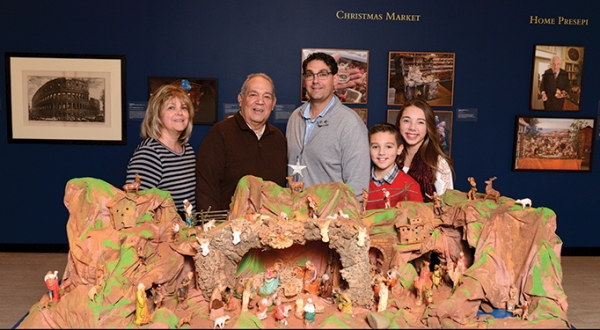
The Papandrea family, from left to right: Mary Carbone, Joseph, Vincent, Joseph S., and Anna Papandrea. Participated, but not pictured: Rocco Pepe and Bella Pepe.
Originally from a town near Calabria, Italy, and later Brooklyn, New York, the Papandrea family has created elaborate presepe for four generations. As a boy, Joseph Papandrea recalls moving out of his bedroom each Christmas season so that the family could create an elaborate presepe that took up most of the room.
When the Papandrea family moved to Utica in 1958, they brought the presepe tradition with them. Villagers, animals, angels, and the Holy Family populate a landscape that is made from scratch each year. The Papandreas have generously recreated a smaller version of their family presepe to share with our community this year.

